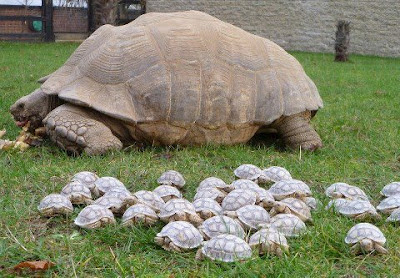Do you know about Tortoise habitat, diet? Don't you know the answer? Don't worry, this
writing will help you. Keep reading to know
There are about 40 types of tortoise including the:
- Aldabran Tortoise
- Galapagos Tortoise
- Mediterranean Tortoise
- Redfood Tortoise
- Yellowfoot Tortoise
- Russian Tortoise
- Hingeback Tortoise
- Desert Tortoise
- Star Tortoise
- Spurred Tortoise
- Leopard Tortoise
- Burmese Mountain Tortoise
- Common long-neck Tortoise
- Murray River short-neck Tortoise
- Krefft’s Tortoise
- Western Swamp Tortoise
- Macquarie Tortoise
The largest tortoises are the giant Galapagos, which lives in the Galapagos Islands in the Pacific Ocean off the coast of South America, and the Aldabran, which lives in the Aldabra Islands off the coast of east Africa. The Galapagos Tortoise can grow to about 1.5 metres (4.9 feet). The Aldabran can weigh up to 300 kgs (660 lbs).
See
more animal facts for kids
Habitat
Most species of tortoise live on land, but some live in fresh water. They live in many different types of environments from deserts and semi-arid areas to lakes, lagoons and swamps and tropical forests.

Tortoises are found in the wild in many countries including:
- Desert Tortoise – California US
- Redfoot and Yellowfoot Tortoise – South America
- Hingeback, Leopard and Spurred Tortoise – Africa
- Star Tortoise – India
- Burmese Mountain Tortoise – Burma, Thailand, Malaysia, Sumatra, Borneo
- Spider Tortoise – Madagascar
- Common long-neck - Australia
Tortoises are also kept as pets in many countries. In Australia the Macquarie, Murray River short-neck and Common long-neck are popular.
Diet
In the wild, most tortoises browse for food – moving around a large area, eating small amounts of food as they go. Some tortoises are herbivores, and eat only plants. Others are omnivores, meaning they will eat anything available including plants, fruit, live prey and carrion.
Tortoises need calcium to build their bones in the same way that humans do. Those that live in warmer climates bask in the sun. The rays produce vitamins in the tortoise’s body, which work with the plants they eat to produce calcium. Colder climate tortoises get less sunshine, so they eat more protein and foods that contain calcium.
For more facts: tiger facts for kids









0 nhận xét:
Đăng nhận xét